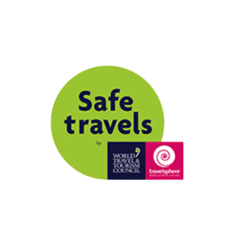The Balkan Adventure
- Return flights
- 14 nights in 4-star hotels
- 23 meals: 14 breakfasts, 2 lunches, 7 dinners
Mon-Fri: 0900 - 1800
Sat: 0900 - 1700
Sun & BH: Closed
With a beguiling blend of nature and history, you're guaranteed an unforgettable adventure in Bulgaria. The keen explorer simply cannot resist being helplessly drawn to the freshening sea breeze and miles of turquoise water characteristic of Bulgaria’s coast, and many cities feel the benefits of this refreshing ambience. And speaking of cities, visitors to Bulgaria are sure to be enthralled at the always-remarkable cultural offering from each of the country's major metropolises. If you're a history buff, you'll want to go on Travelsphere's Bulgaria guided tours to experience this nation beyond the books.
With Travelsphere, discovering Bulgaria’s hidden heritage is easier than ever; there's simply no way to top a round-trip of the entire country, taking in all the sights that make it truly unique in the world. Beginning in its bustling capital, Sofia, our Bulgaria package holidays will introduce you to many wonderful sites that tell the story of the country's rich history, from Plovdiv's Roman amphitheatre, dating back to the 2nd century AD, to the incredible UNESCO-listed city of Nessebar. You'll also get to watch artisans at work in the ancient town of Tryavna, learn how Bulgaria's famous rose oil is produced and do so much more. Soul-stirring beyond belief, our Bulgaria escorted tours guarantee a great time for travellers of all interests.

We’re delighted to have received the World Travel and Tourism Councils (WTTC) Safe Travels stamp, which recognises businesses and destinations worldwide that have adopted a new set of global protocols to support the return of 'Safe Travel' around the world.
Please note: We are not currently operating tours to Bulgaria. Why not be inspired to explore other thrilling destinations around the world with Travelsphere.
A rose is more than a thing of beauty – it’s oil extracts are used worldwide by leading parfumiers and are also thought to have healing properties…
"We had a really enjoyable trip to Bulgaria, all the excursions and hotels were very good. Our Tour Director and Tour Guide were excellent and helped to make the holiday extra special. It is the first time that I have ever used Travelsphere but would not hesitate using them again in the future or to recommend them to friends or family" - Sue Williams
A group of us met on a Travelsphere tour of Bulgaria a couple of years ago and have kept in touch and met up on several occasions. Last year we put names of Travelsphere holidays into a hat and pulled out an Italian trip which we did. Who knows where will go next...As you can appreciate, we always have a brilliant time" - Gill Zeke
An escorted tour to Croatia offers the opportunity to discover a country that has, in recent times, become one of the most popular destinations in Europe thanks to a rewarding mix of sublime scenery and towns and cities that are positively brimming with history.
Sitting astride two continents, a position that has given rise to a culture that reflects both East and West, our holiday packages to Turkey show a country where European aspirations mix comfortably with Asian traditions. With a heritage stretching farther back than the Byzantine Empire and even the Trojan War, the country we now know as Turkey has seen some of the most important events in all of human history.
Malta is a mesmerising destination that has a definite charm to it, which can make anyone feel relaxed and ready for adventure. Situated in the middle of the Mediterranean Sea, between Sicily and the North African coast, Malta has plenty of sights and attractions that’ll appeal to overseas visitors with all sorts of tastes.